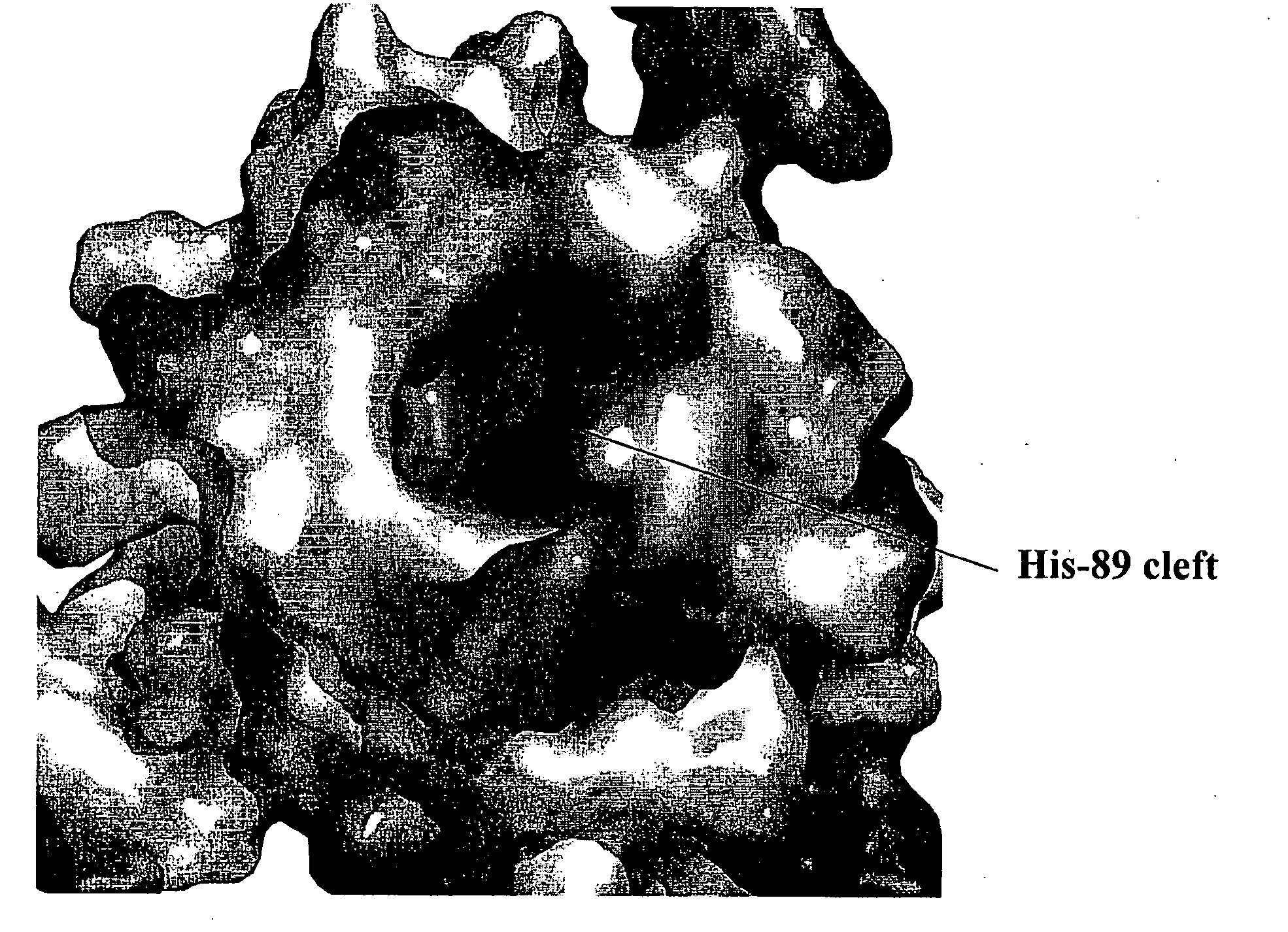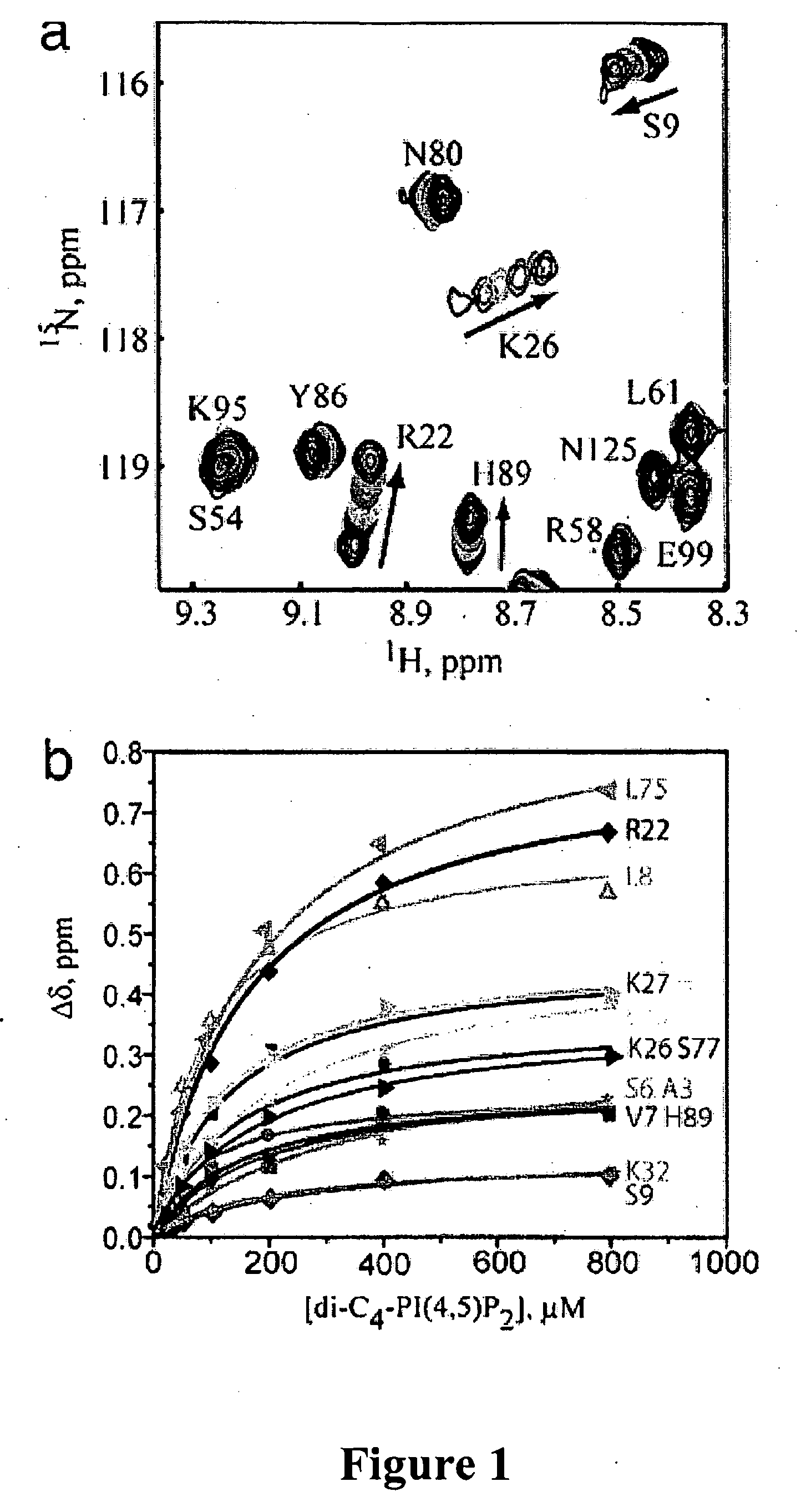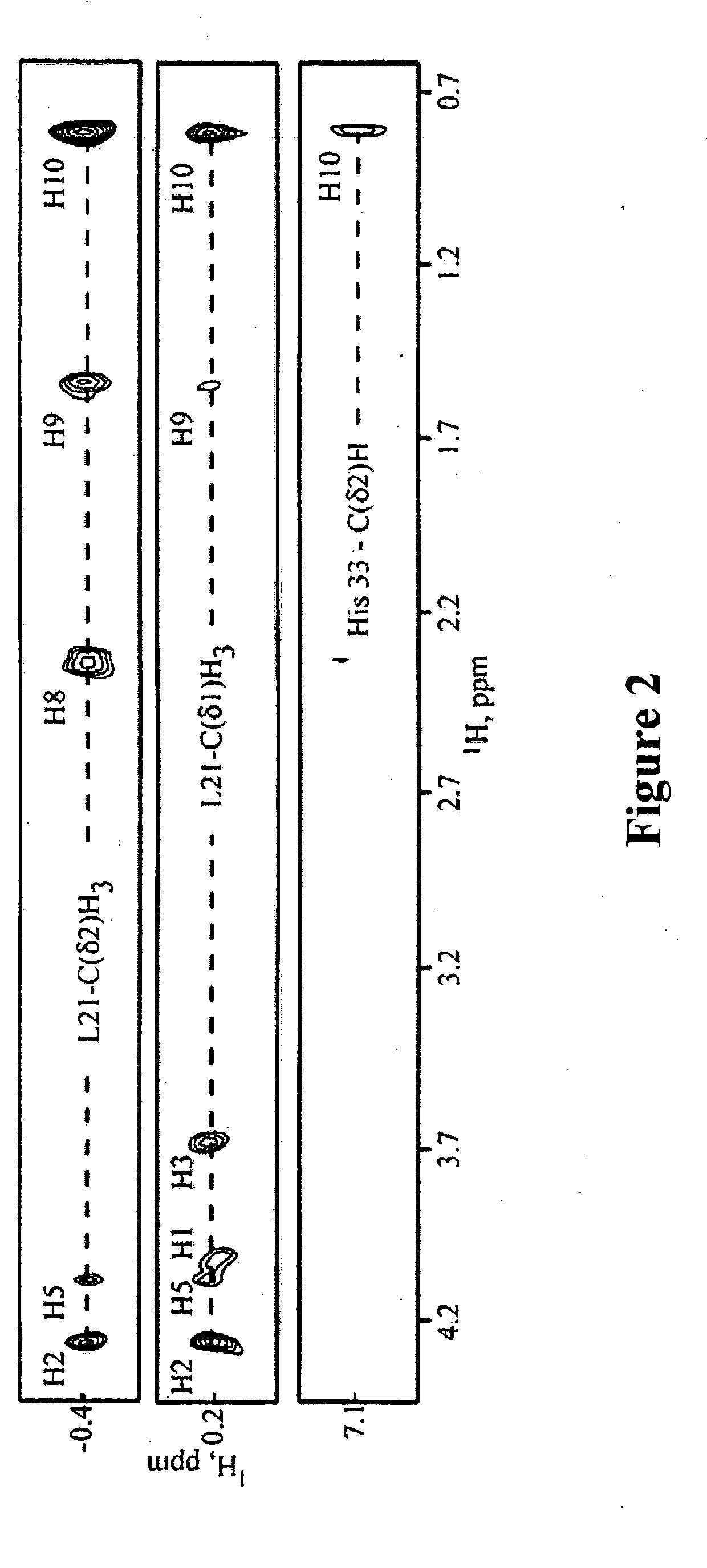Structural basis for targeting hiv-1 gag proteins to the plasma membrane for virus assembly
a structure and protein technology, applied in the field of drug screening and treating hiv, can solve the problems of cellular immunity depression, inability to protect patients from opportunistic infections, malignancies and various other pathological conditions, and the depletion of helper t-cells, and achieve the effect of sufficient binding to the plasma membran
- Summary
- Abstract
- Description
- Claims
- Application Information
AI Technical Summary
Benefits of technology
Problems solved by technology
Method used
Image
Examples
example 1
PI(4,5)P2 Binds HIV-1 MA and Triggers Myristate Exposure
[0096]To gain insight into the structural basis for PI(4,5)P2-dependent membrane targeting,
[0097]NMR studies of phosphatidylinositide interactions with the HIV-1 MA protein were conducted. PI phosphates contain two long-chain fatty acids that promote micelle formation in aqueous solution (34). The most abundant cellular form of PI(4,5)P2 contains stearate and arachidonate at the 1′- and 2′-positions of the glycerol group, respectively (35). Addition of substoichiometric amounts of this PI(4,5)P2 species to unmyristoylated [myr(−)]MA and myrMA led to severe broadening in the 1H-15N heteronuclear single-quantum coherence (HSQC) NMR spectra, and at 1:1 PI(4,5)P2:MA stoichiometries, signals for backbone NH groups were broadened beyond detection. Attempts to study native PI(4,5)P2 binding in the presence of dodecylphosphocholine detergent micelles, which were successfully used to study PI-3-phosphate interactions with the FYVE membr...
example 2
Structure of the di-C4-PI(4,5)P2:myrMA Complex
[0099]The structure of the di-C4-PI(4,5)P2:myrMA complex was determined by using a combination of 15N-, 13C-, 15N / 13C-, 13C / 13C-, and 13C-edited / 12C-double-half-filtered nuclear Overhauser effect (NOE) experiments, as shown in FIG. 2. NOEs observed between the myristyl group and core residues of myr(s)MA were absent in the di-C4-PI(4,5)P2:myrMA complex, confirming that di-C4-PI(4,5)P2 binding causes extrusion of the myristyl group. The NMR data are consistent with a single binding mode, in which the glycerol moiety packs against the side chains of His-33 and Trp-36, and the C4-acyl chain attached to the 2′-position of the glycerol packs within the β-II-V cleft against the side chains of Leu-21, Lys-27, Tyr-29, His-33, Trp-36, and Ser-77. The phosphoinositide head group packs against Leu-21 and Lys-27, burying the 2′-fatty acid chain, as shown in FIG. 3. The 1′-acyl chain does not exhibit NOEs with the protein and appears exposed to solve...
example 3
Myristate Exposure is Induced by an Allosteric Mechanism
[0101]The binding of di-C4-PI(4,5)P2 to myrMA results in small local structural changes, as evidenced by very small changes in intraprotein NOE crosspeak patterns and intensities for residues Arg-20, Arg-22, Gly-25, and Gln-28 of the 3-hairpin. No changes in intraprotein NOEs were detected for residues of helices II and V. However, significant NMR spectral and structural changes were observed for residues Myr-1-Lys-18 of myrMA. Residues Ser-9-Lys-18, which form an α-helix in the absence of di-C4-PI(4,5)P2, form a more compact helix with 310 character in the di-C4-PI(4,5)P2:myr(e)MA complex, with Leu-13 packing tightly against Trp-16. In addition, Glu-12, which is located near the N terminus of helix I and does not make long-range contacts in the free myr(s)MA protein, packs tightly against the side chain of Val-88 upon di-C4-PI(4,5)P2 binding. These changes enable the Glu-12 carboxyl group to form hydrogen bonds with the side-c...
PUM
| Property | Measurement | Unit |
|---|---|---|
| Antimicrobial properties | aaaaa | aaaaa |
Abstract
Description
Claims
Application Information
 Login to View More
Login to View More - R&D
- Intellectual Property
- Life Sciences
- Materials
- Tech Scout
- Unparalleled Data Quality
- Higher Quality Content
- 60% Fewer Hallucinations
Browse by: Latest US Patents, China's latest patents, Technical Efficacy Thesaurus, Application Domain, Technology Topic, Popular Technical Reports.
© 2025 PatSnap. All rights reserved.Legal|Privacy policy|Modern Slavery Act Transparency Statement|Sitemap|About US| Contact US: help@patsnap.com



